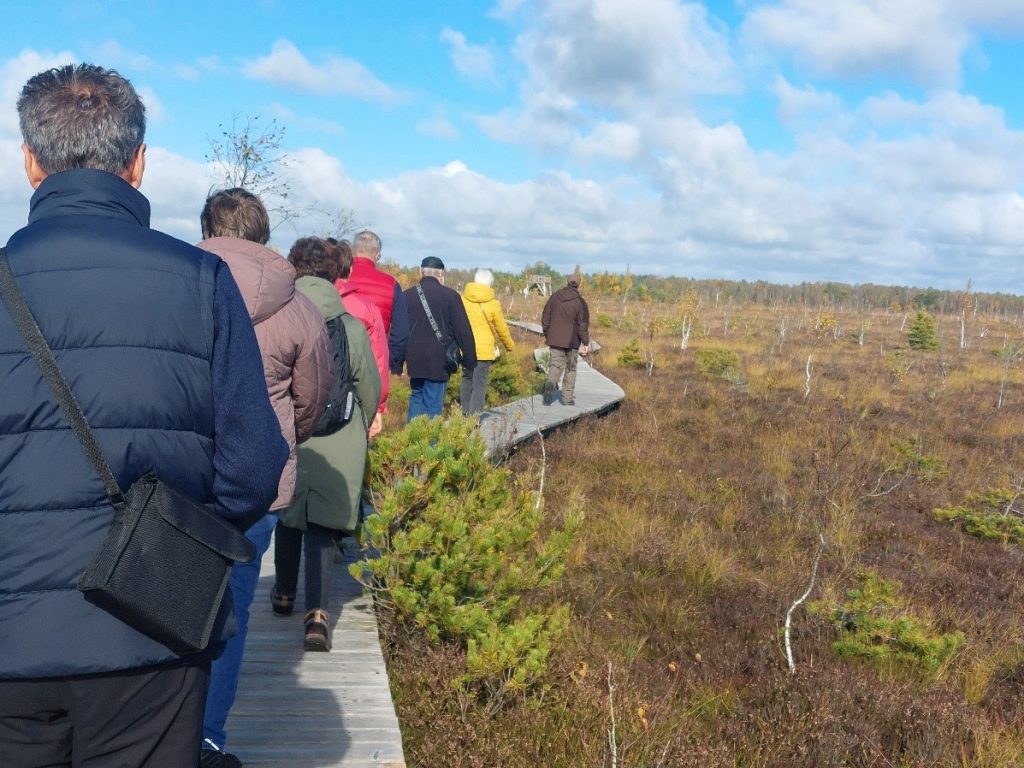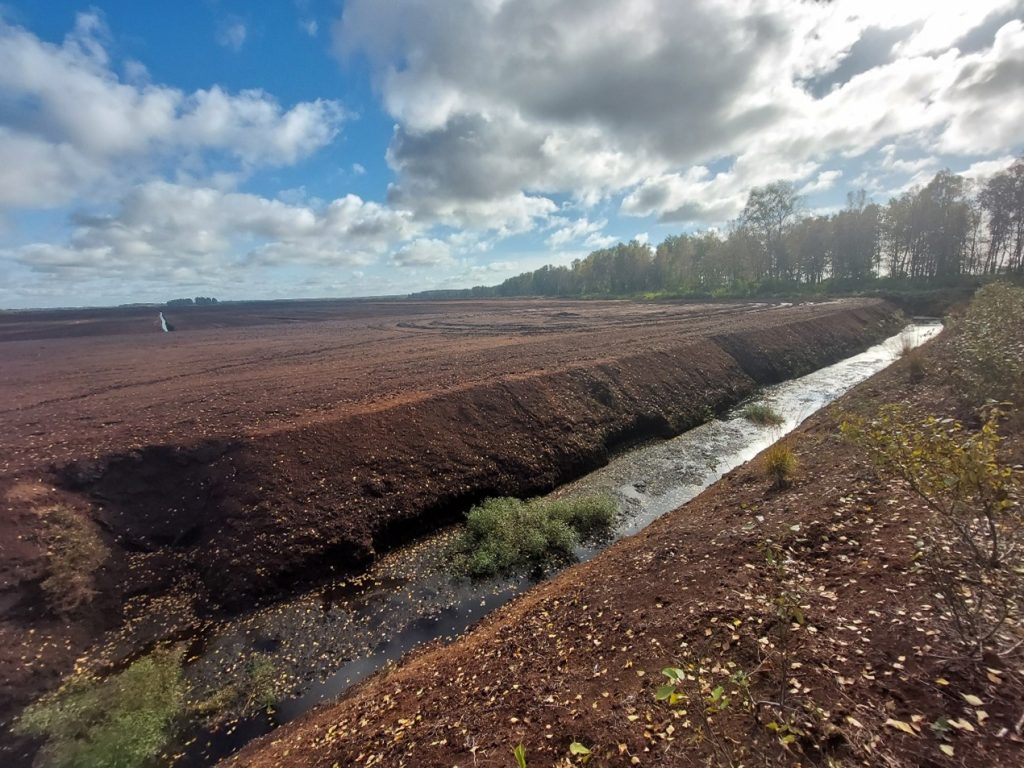On 11 October, the Interreg Europe programme project Peat EU was launched in the Aukštumala raised bog to accelerate the development of effective policy measures that would make the sustainable management, conservation, and restoration of peatlands a nature conservation priority in all European countries.
The Aukštumala raised bog is an extremely important natural site not only in Lithuania but also globally. It is the first raised bog in the world that was described in a scientific monograph (C. A. Weber, 1902) and is one of the largest bogs not only in western Lithuania but in the entire territory of Lithuania.
The presentation by scientists from NRC Laboratory of Climate and Water Research emphasized that Aukštumala is the youngest of the major Lithuanian bogs. Sediments began to accumulate there as late as 6,000 years ago, compared to sediment accumulation 14–15 thousand years ago in the Čepkeliai Marsh, over 14 thousand years ago in the Ginkūnai Marsh near Šiauliai, 9.5 thousand years ago at the bottom of the famous Velnio duobė (“Devil’s Pit”), and 9,400 years ago in Strėva Sinkhole, another “devil’s pit” in Aukštadvaris. Such time of the formation of these wetlands was determined by the development of geographical conditions during the post-glacial period – the earlier emergence of land in southern Lithuania, the much later drainage of glacial lakes in the Nemunas Delta, and other phenomena. The oldest bogs in Lithuania are located in the Medininkai Uplands, where peat began to form during the Merkinė interglacial period, i.e. 130,000 years ago. For naturalists, bogs are archives of the past natural changes, natural ecosystems, and reservoirs of water resources.
Text by Dr. Jonas Satkūnas (Laboratory of Climate and Water Research)
Photos by Indrė Satkūnienė

